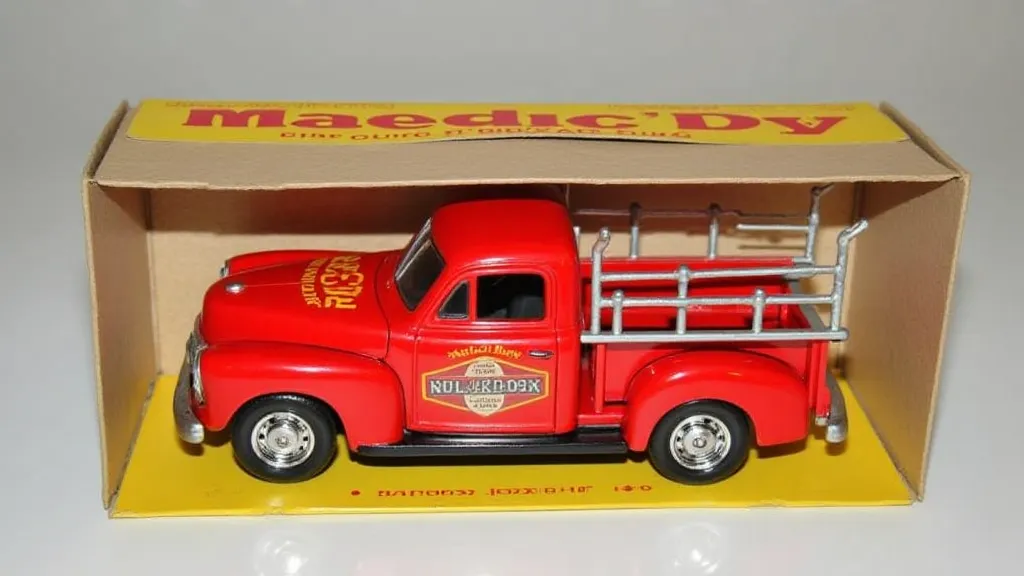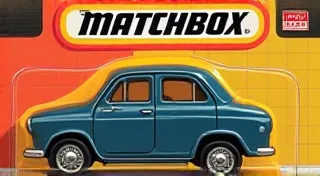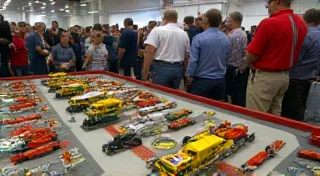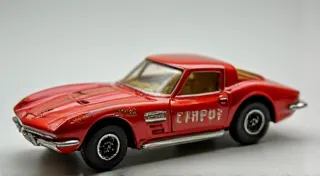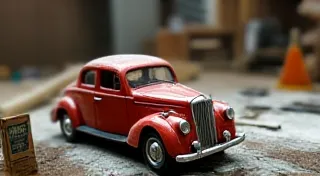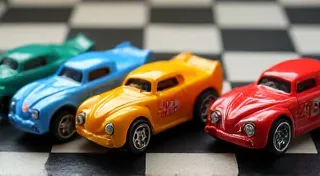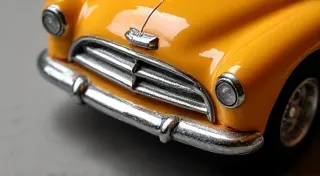Spotlight on the 1969 Lesney Matchbox Fire Chief: A Highly Coveted Variation
The world of vintage Matchbox cars is a rich tapestry of miniature history, design evolution, and passionate collecting. Within this landscape, certain models stand out as particularly sought-after treasures. The 1969 Lesney Matchbox Fire Chief is undoubtedly one of them. This article delves into the specifics of this iconic model, exploring its design quirks, production nuances, common imperfections, and the reasons behind its considerable value to collectors. Whether you're a veteran of the miniature car collecting scene or just beginning your journey, understanding the allure of the 1969 Fire Chief is a significant step.
A Brief History: The Fire Chief's Early Years
Prior to 1969, the Matchbox Fire Chief, introduced in 1963, had undergone a few revisions. These earlier versions, while still desirable, are distinct from the 1969 model which brought about key changes that solidified its collectibility. Lesney Products, the British company behind Matchbox, continually refined their designs, reflecting evolving trends and improving production techniques. The 1969 iteration represented a pivotal moment in the Fire Chief’s lifecycle, combining desirable aesthetics with subtle alterations that would later become focal points for collectors.
The general design ethos of the Fire Chief always centered on capturing the power and majesty of firefighting equipment in a miniature form. The early models featured a robust, if somewhat simplified, depiction of a traditional fire engine. The 1969 version retained this essence but introduced enhancements that greatly increased its appeal.
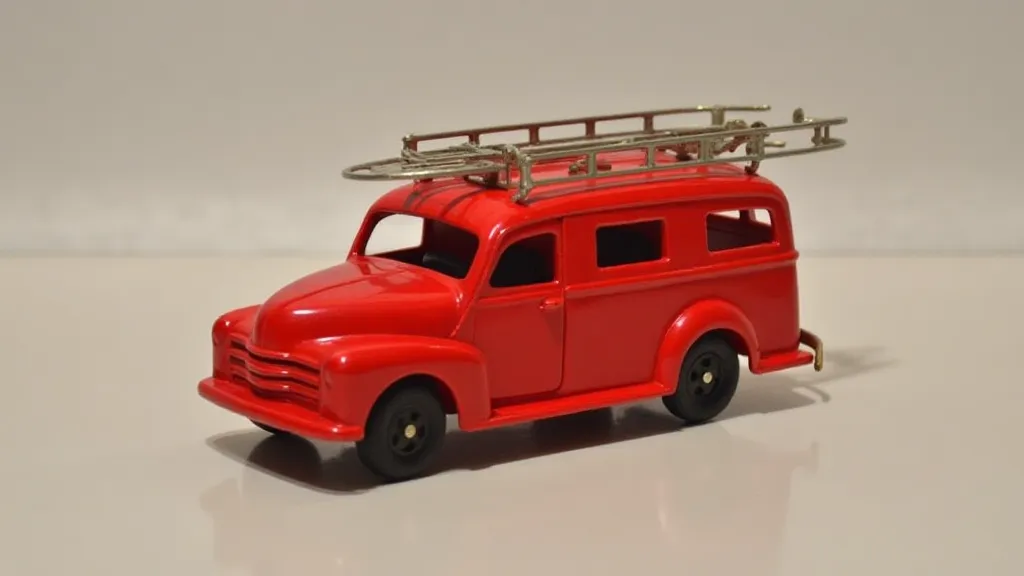
The 1969 Variation: What Makes It Special?
The distinguishing characteristic of the 1969 Fire Chief lies in its wheels. Prior models used a more basic, thinner wheel configuration. The '69 variation adopted the "Superfast" wheels. These were larger, more detailed, and notably quicker when rolled – hence the “Superfast” moniker. This change wasn’t merely cosmetic; it represented a significant upgrade in the perceived quality and play value of the model. Beyond the wheels, subtle differences in the grille and bumpers were also present, though often less noticeable to the untrained eye.
The color variations also contribute to the collectibility. While red was the most common color, other rarer shades, such as metallic blue and dark olive green, command significantly higher prices. The original paint application, while often vibrant, can also exhibit imperfections that affect value – a topic we will explore further down.
Production Details and Manufacturing Process
Lesney employed Diecast zinc alloy for the Fire Chief’s body and used a combination of stamping, casting, and assembly processes. The wheels, initially made of plastic, were later upgraded to metallic versions, further enhancing the "Superfast" feel. The paint was applied in multiple layers, and tampo printing was used to apply the Matchbox logo and other markings. Production occurred in both the UK and, later, in Macau as Lesney outsourced manufacturing to reduce costs.
The transition to outsourced production had a direct impact on the perceived quality. Many collectors believe that the early UK-produced models exhibit a higher level of detail and a more robust construction compared to the later Macau versions. This perception significantly influences value and desirability.
Common Imperfections and Their Impact on Value
As with any vintage toy, imperfections are common. Scratches, paint chips, and fading are unavoidable signs of age and play. However, certain imperfections are particularly relevant to the value of the 1969 Fire Chief. "Shimmy," a slight wobble in the wheels, is a relatively common issue and can detract from the car’s overall appeal and value. Missing or damaged ladders are also significant downgrades.
Furthermore, the presence of "dust" or "spiderwebbing" in the paint – fine lines and imperfections that result from the paint application process – can affect value. While these imperfections are often considered part of the car's history, their severity can impact its desirability.
The original cardboard box is also a crucial element in determining value. A pristine, original box in excellent condition can significantly increase the car’s worth. Boxes in poor condition, or with significant damage, will reduce the overall value substantially.
Color Variations and Their Rarity
While red remained the predominant color for the 1969 Fire Chief, other color variations emerged, increasing their rarity and value. Metallic blue and dark olive green are the most sought-after, commanding prices significantly higher than their red counterparts. Other less common colors occasionally surface, further enhancing their collectibility. The color variations are often linked to specific production runs and can provide clues about the car's origin and manufacturing history.
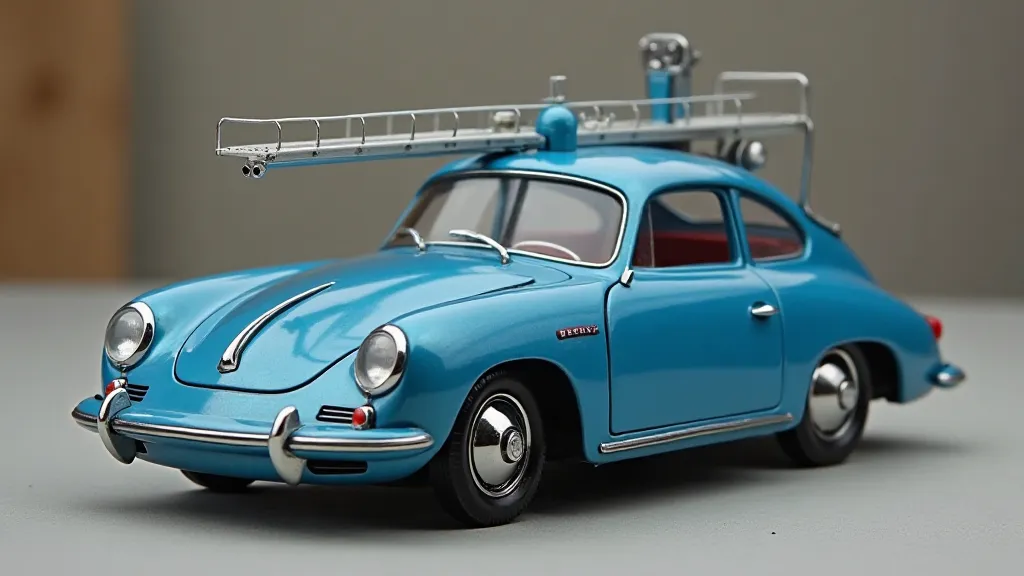
Factors Influencing Value: Supply, Demand, and Condition
The value of any collectible is ultimately determined by the interplay of supply and demand. The 1969 Fire Chief, particularly in its rarer color variations and excellent condition, is in high demand among collectors. However, supply is limited by the car's age and the inherent attrition that occurs over time. The general condition of the car is paramount. A near-mint example, accompanied by its original box, will command the highest price.
The market for vintage Matchbox cars is dynamic. Trends, collector preferences, and economic factors can all influence prices. Online auction sites and specialist toy fairs are key venues for buying and selling these collectibles.
Conclusion: A Timeless Treasure
The 1969 Lesney Matchbox Fire Chief represents a fascinating intersection of design, engineering, and collecting passion. Its distinctive "Superfast" wheels, subtle design variations, and scarcity in certain colorways make it a prized possession for many collectors. Understanding its history, production details, and the factors influencing its value empowers both seasoned enthusiasts and newcomers to appreciate the unique allure of this iconic miniature. Whether you're a dedicated collector or simply admire the artistry of vintage toys, the 1969 Matchbox Fire Chief stands as a testament to a bygone era of quality and creativity.
